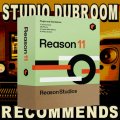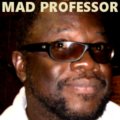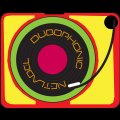| WWW,
JANUARY 2007 - When Star Recordings
approached me to produce an album for their
label, they took me straight into a project
which lasted a year.
Throughout this year, I learned a lot
about the actual process of creating an
album. and in this article I would like
to share some of these things with you.
Maybe it can be of some use for you.
From 1997 to this 2004, more or less all
I did was releasing single tracks. In 2004 I
actually released a mini album called
"Hardcore Dub Sessions" in which I
already did a few things that I have done in
this project in a much bigger way. Then in
2005 I went back to releasing single tracks.
And when I had enough, I made an album out
of them.
But for this new album I had to choose a
different way. I couldn't just grab and pick
a few tunes and give them to Star Recordings
in order to have them burn it on CD.
So I had to create new music. And not
just one track, no, a complete album. And
since an album is about 70 minutes, you
could say that you need at least 15 tracks,
preferably more. But since I wanted to make
a Showcase album, it had to be around that
number of tracks.
So then, does it really have to take a
whole year in order to create 15 or 16
riddims?
Of course not.
But it does take a year to create about
50 riddims, add vocals to them, and mix
them.
50?
Yes.
For it is definitely not enough to create
as much music as you want to have on CD.
One reason for that is, that of course
not all the riddims one creates have a
similar quality. One day you have a better
feeling than the other day, and so there are
a lot of circumstances which really define
just what kind of riddim you're going to
make.
Another reason is that you really want
some kind of variety in the music on the
album, too. I have periods in which I only
make Steppers, for example. And then after a
while, I feel more like doing a little Rub a
Dub style, where on other periods I prefer
One Drops.
So if I had to produce let's say 15
riddims, I should at least produce triple
that amount. And I should go through
different periods in order to create
different styles. It gives me a big
catalogue to choose from, and I need that
choice to make a better album.
I started to simply make riddims. Drum,
bass, other instruments. When I was more or
less satisfied with a riddim, I mixed a DUB
from it. This helped me to get an idea from
the vibes, and to actually create a set up
that I could use for the final mixes.
For you must have variety in an album,
but also consistency. The tunes must
together form a story, and so there have to
be elements in the music that you can find
back throughout the entire album. And it's
not just the instruments that make this
consistency. Effects are crucial, too. And
not just in the DUB mix!
Throughout the year, a final set up was
distilled.
I decided to use two different Drum kits,
one Bass Guitar, one "Skank
Section" (organ, piano, guitar"
and one Horn Section (Trombone, Sax and
Trumpet). I also programmed several effects
to enhance the sound. Especially the reverb
is very important.
So I had more or less formed a
"band" with a particular sound and
particular line up.
But I needed variation too, and not just
in the music. The instruments themselves are
at least as important as the riddims they
play. The variation, in my case, is in the
percussion and accompanying instruments.
I used violins, synthesizer strings,
beeps and bleeps, clavinets, and other
instruments. And for percussion, I used
everything from guiro's to conga's, from
bongo's to cowbells, from TR808 style Snare
Drums to Hand Claps.
It "simply" takes a long time,
to figure out all these things. Creating a
few tunes is definitely not enough to find a
certain sound which can last well over an
hour. It took me well over 6 months to come
to this.
After creating all these tunes, and the
set up, it was time for the next step:
voicing the riddims.
As I mentioned
in one of my updates, the vocals in
themselves were quite a story too. But in
the context of this article, I won't really
go into that aspect very much. But in short:
I rode each riddim with either singing or
toasting/chanting style, and sometimes in a
combi.
In the meantime, there was a group of
people who listened to most of the DUBS I
did before voicing them. Throughout the
year, I myself listened a lot too, and so
the riddims kind of grew on me too. I
selected 15 tracks and put them on a Net
Album, which I released for free. Feedback
about specific riddims helped me to find
people's preferences.
I created more DUBS, this time with the
voice. The same story: I released them as a
free MP3/WAV album and watched closely what
the feedback said.
Only after I went through this entire
process, did I start mixing the album: the
final step.
Not just "the best of the 50
tunes", though.
I decided to do the "concert
approach". I have experience in
preparing for concerts, both as member of a
band and as a solo artist doing DUB.
So I selected one tune, which I thought
was good as an opening track. I mixed it,
just like I would have done it on a concert.
In principal, that is. For all my tracks are
mixed in such a way that I really need 20
hands to do it all in one take.
The track obviously produced a certain
atmosphere. It's the track and the mix doing
it. And from this atmosphere, I went to the
next track. I asked myself: "what would
I play as the next tune, and how would I
build that tune". The answer was
-obviously- the next mix.
I went through this process during the
entire mixing of the album, from the top to
the very last drop. First select, then mix.
Not the other way around!
One reason for that was, that since I
would mix and select in this last phase, the
tracks would follow each other more or less
in a flowing way.
And this is where my experience in
performing came in very handy. For an album
is more or less a concert, too. Another
reason to mix and select in that final
phase. A third reason would be the length of
the tracks, for long and short tracks would
have to follow each other too, in order keep
up a vibe of variety.
The opening track started with a DUB
part, only to go over into vocal in the
second half. But the track which followed,
has a different arrangement. And so, there
are continually vocal parts and dub parts
following each other. Those who prefer DUB,
don't have to wait to long, and those who
prefer the Vocal parts would have the same
experience.
Finally, the mastering process. Mastering
is where you spice up your track after you
mixed it, by using a combination of
compression and limiting and normalizing
techniques in order to have all the tunes
have more or less the same volume, while too
extreme peaking is corrected and so on.
To me, it was a very interesting and
especially learning experience. And, apart
from the production of the album, the
project also delivered some very nice
by-products. I have a lot of tunes here, all
with vocals, which I can release at a later
stadium, while working on a brand new line
of tracks. And apart from the album
"Showcase", I already released two
DUB albums from these sessions.
All in all, I thought that the things I
learned might be helpful for my fellow
colleagues who are planning to release an
album, too. I can recommend it to each and
everyone.
One Love,
Messian Dread
FIVE TIPS
- Make at least twice the amount of
tracks you want to have on your album.
- Take your time while you do this, in
order to make a variation in tracks and
feelings.
- Develop a set up during the many
sessions in order to create a better
sound.
- Make test dubs from the riddims, let a
selected group of people listen to them,
or pre-release some tracks in a
different mix in order to get an idea as
to what tracks people prefer.
- Select an opening track, then mix it.
The same goes for the rest. Select the
second before mixing it.
|























